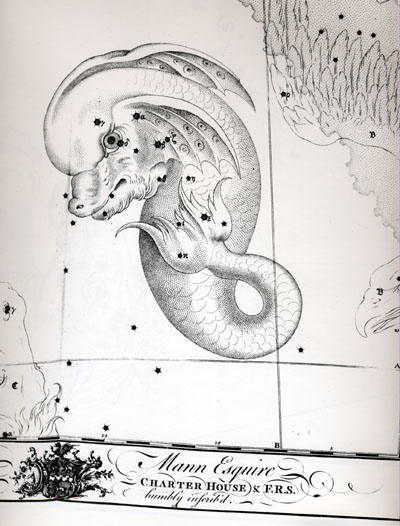
|
John Bevis |
Mercurius
a Venere Occultatus Maii 17.1737. in Observatorio Regio Grenovici, ab J.
Bevis, M. D. Observatus. Philosophical Transactions, London 1737 |
John Bevis
Mercurius a Venere Occultatus Maii 17.1737. in Observatorio Regio Grenovici, ab J. Bevis, M. D. Observatus. Philosophical Transactions, London 1737
John Bevis (November 10, 1695 - November 6, 1771)
A cura di Hartmut Frommert e Christine Kronberg
Born
on November 10.
In
1738 he set up a private observatory at Stock Newington, North London, from
where he made observations for his own star atlas, Uranographia Britannica,
which he completed in 1750. Unfortunately, the publisher went bankrupt after
engraving the 52 plates, and only very few printings had been made (Bevis
1750). It was eventually published posthumously, in 1786, from the plates
engraved in 1748-50.
This
atlas contains the "nebulae" M1, M11, M13, M22, M31,
and M35, which Bevis must
have known about; this indicates that he might be the original
discoverer of M35 also (this is usually assigned to De
Chéseaux). Charles
Messier had access to a copy of this work, and consequently, added
references to this work in the corresponding entries in his catalog.
Bevis' Atlas
Celeste has lately been researched (Ashworth
1981, Kilburn et.al. 2003).
It also contains the star clusters M44 (Praesepe)
and M45 (Pleiades),
as well as southern Omega
Centauri (NGC 5139) and NGC
6231. Moreover, it contains three stars which don't exist as such ("extinct
stars"): One of them is clearly open cluster M29 which
is shown as star and not as nebula or cluster, another one is Nova 1670
Vulpeculae, and the nature of a third one, in Ursa Minor at RA 16:10, Dec +82d
(J2000.0) cannot be cleared up. The atlas also shows the positions of the
supernovae of Tycho (1572) and Kepler (1604).
Bevis
is one of only two persons in Britain who are known to have observed comet
Halley on its first predicted return in 1759: He observed it on May 1 and 2,
1759 after its perihelion; the other British observer, also physician, was
Nicholas Munckley who saw it on the same dates.
From
somewhen in the 1760s until shortly before his death, Bevis was in
correspondence with Charles Messier, and translated some of Messier's earlier
observing reports and publications for
publication in the Philosophical Transactions.
John
Bevis died on November 6, 1771 at age 76, from injuries received in a tragic
accident when falling from his telescope.
Links:

John
Bevis’ ATLAS CELESTE, http://www.atlascoelestis.com/8.htm
John
Bevis' ATLAS CELESTE (
John
Bevis' Uranographia Britannica, featured by William B. Ashworth, Jr of
the Linda Hall Library within their Out of This World Online
Exhibition
Star charts from Uranographia Britannica:
John
Bevis images and info, NGC/IC observers' page
Some John Bevis info, Yann Pothier
References:
William
B. Ashworth, 1981. John Bevis and his Uranographia (ca. 1750). Proceedings of the
American Philosophical Society, Vol. cxxv (125), pp. 52-73.
John
Bevis, 1750. Atlas Celeste (Uranographia Britannica). John Neale, London;
unpublished prints.
Kenneth
Glyn Jones, 1968. The Search for the Nebulae -- III. Journal of the British
Astronomical Association, Vol. 78, No. 6 (1968), pp. 446-454. Section on Bevis:
pp. 450-451. Reprinted in: The Search for the Nebulae. Chalfont St. Giles, 1975.
Kenneth
Glyn Jones, 1991. Messier's Nebulae and Star Clusters. 2nd ed, Cambridge
University Press, pp. 313-314.
Kevin
J. Kilburn, Jay M. Pasachoff, and Owen Gingerich, 2003. The
Forgotten Star Atlas: John Bevis's Uranographia Britannica. Journal for the
History of Astronomy, Vol. 34, pp. 125-144. [ADS:
2003JHA....34..125K].
Hartmut
Frommert e Christine Kronberg
Mercurius a Venere Occultatus Maii 17.1737. in Observatorio Regio Grenovici, ab J. Bevis, M. D. Observatus. Philosophical Transactions, London 1737
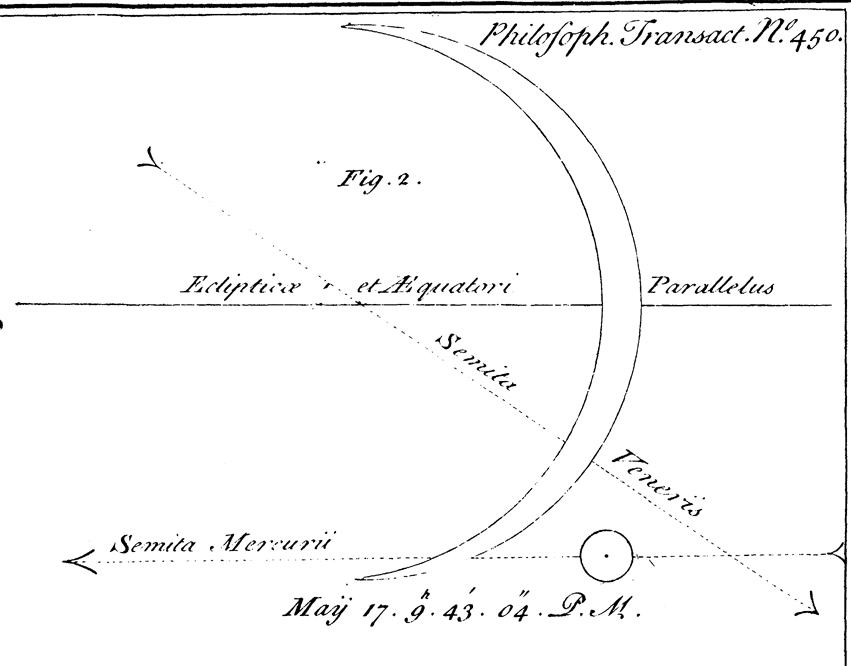
Il resoconto dettagliato di Bevis a Philosophical Transactions
(1737-1738, 40°),
l'annuario scientifico ufficiale della Royal Society di Londra, relativo all’occultazione di Mercurio da parte di Venere
consiste in un elenco commentato di
sette osservazioni al telescopio dove vengono riportate le posizioni
reciproche dei due pianeti per determinati momenti dei quali si specifica
l’ora, i minuti primi e i minuti secondi . Le ore sono intese P.M., post
meridiem, cioè nel pomeriggio
a partire da mezzogiorno. Alcune delle osservazioni sono pertanto avvenute in pieno sole.
L’occultazione è data per le ore 9

Il
grafico che accompagna la relazione, Fig. 2 nella tavola, ricostruisce la
situazione per le ore 9

Bevis è l’unico uomo che abbia mai osservato una occultazione di
pianeti, evento rarissimo come si può verificare dalla seguente tabella
del Circolo Astrofili Talmassons
http://www.castfvg.it/zzz/ids/occultazioni_fra_pianeti.html
Insieme
alla tavola di Bevis propongo la ricostruzione del cielo visibile da Londra
effettuata con il programma Perseus per le ore 21
La discrepanza tra le date di Perseus e quelle indicate da Bevis sono date dal fatto che l’astronomo britannico utilizza ancora il calendario secondo il riferimento giuliano, non considerando la riforma gregoriana, cattolica, avvenuta già dal 1582.
TAVOLA
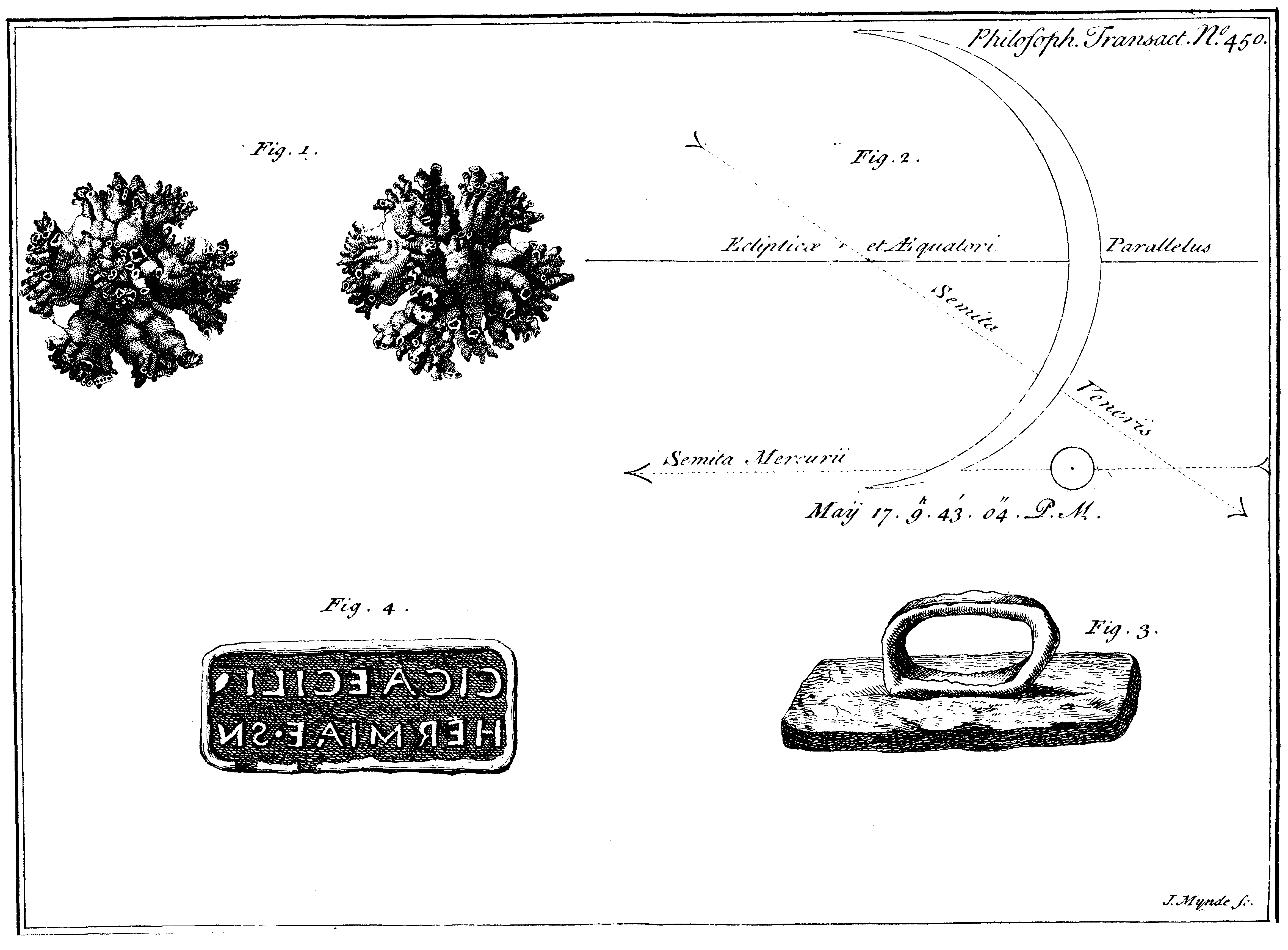
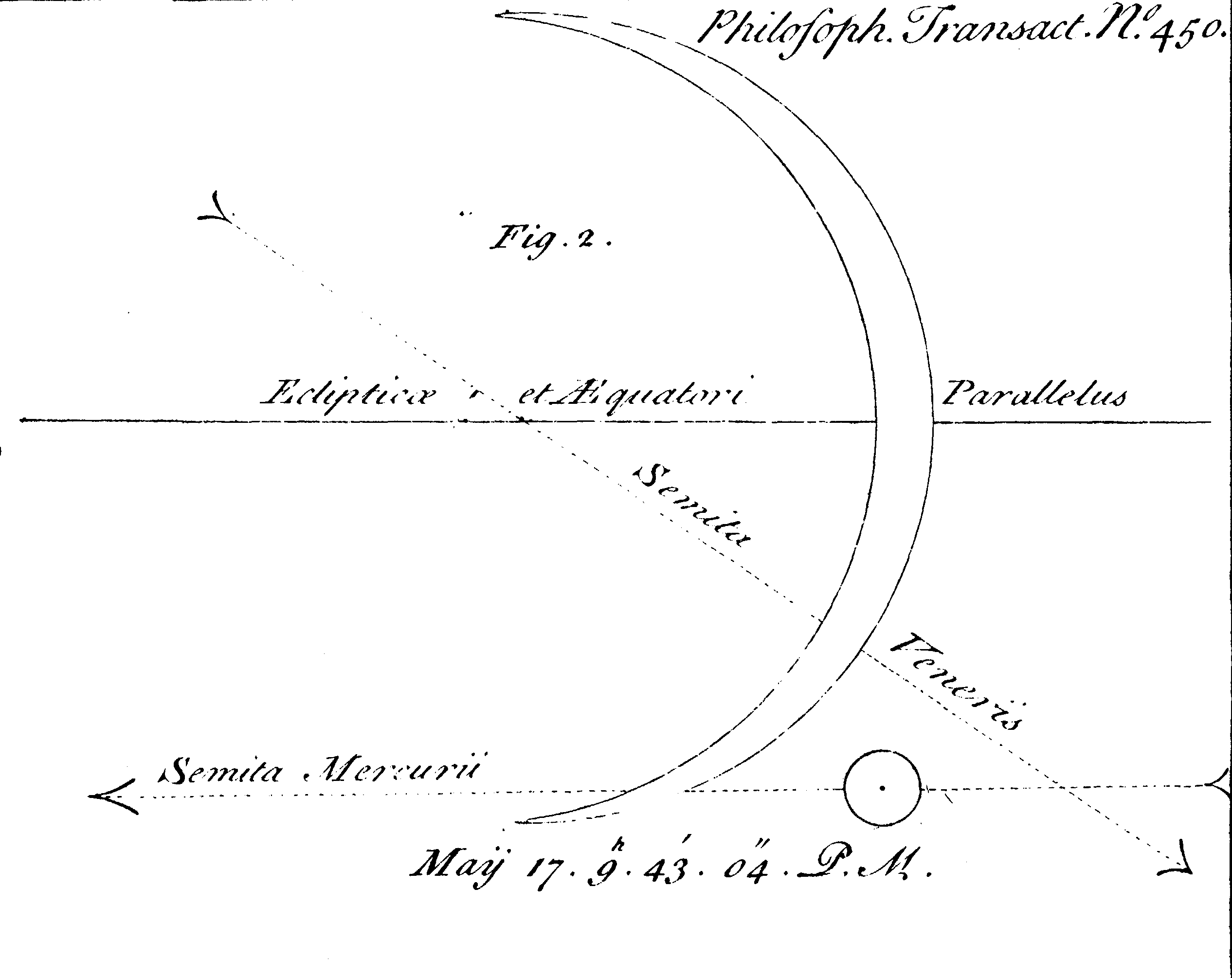
RICOSTRUZIONE GUIDE 8.0
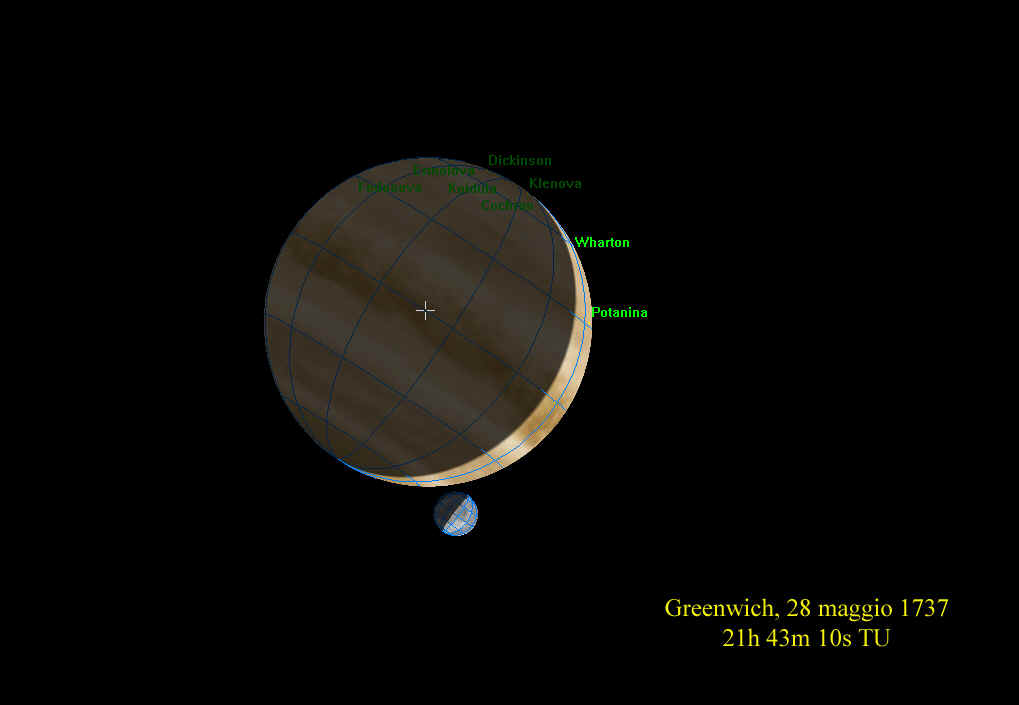
RICOSTRUZIONE PERSEUS
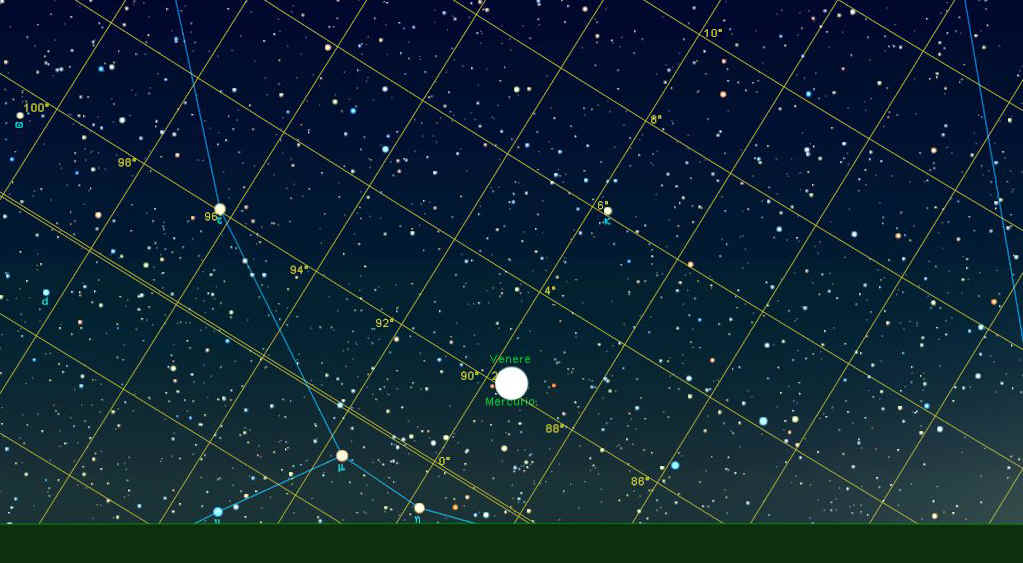
TESTO
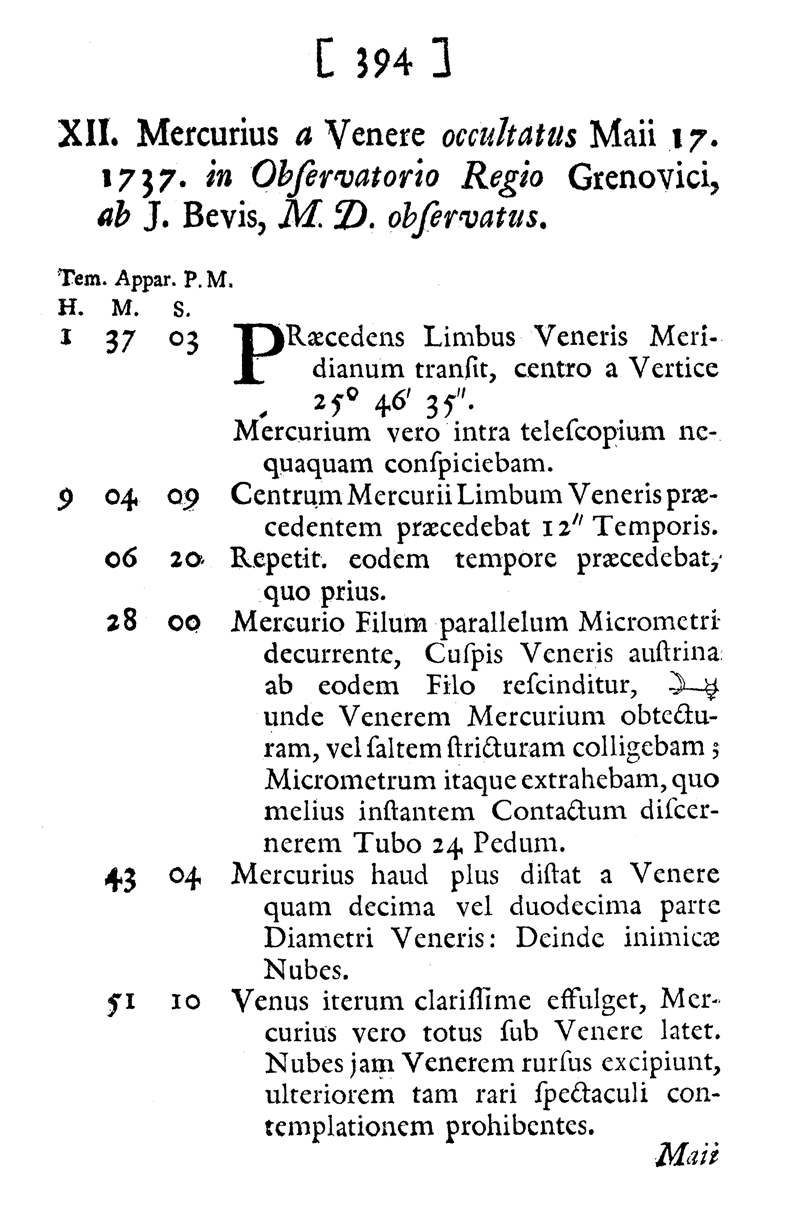
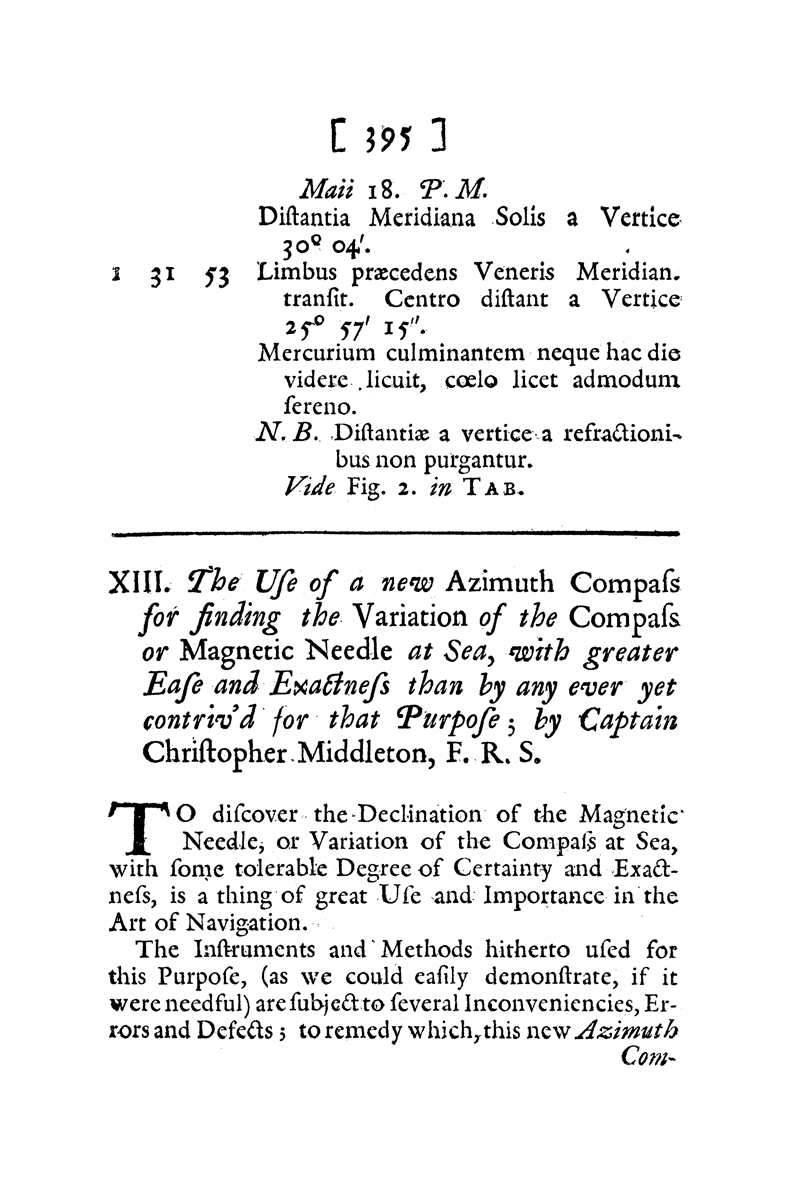
Bevis,
l'anno successivo, invia a Philosophical Transactions (1739-1741, 41°)
una ulteriore comunicazione con la quale corregge leggermente gli orari delle
osservazioni confermando nel suo complesso la precedente relazione. Nel nuovo
titolo il termine occultatus viene sostituito con l'equivalente sublatus
:
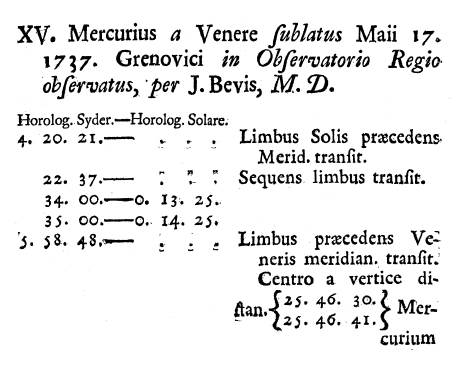
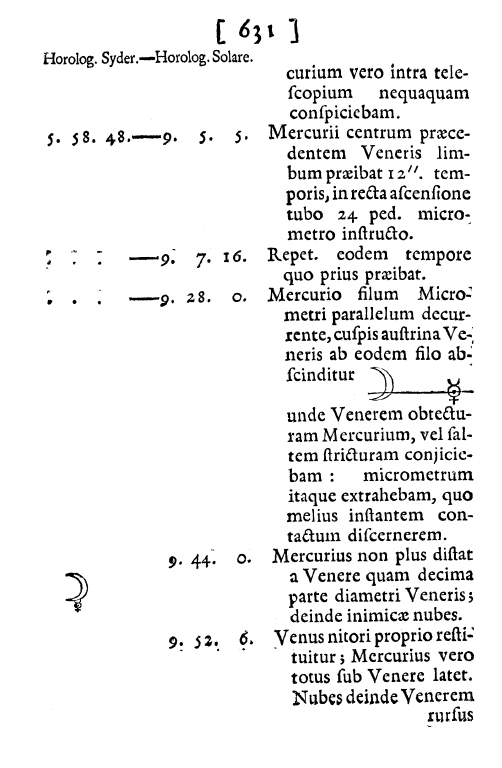
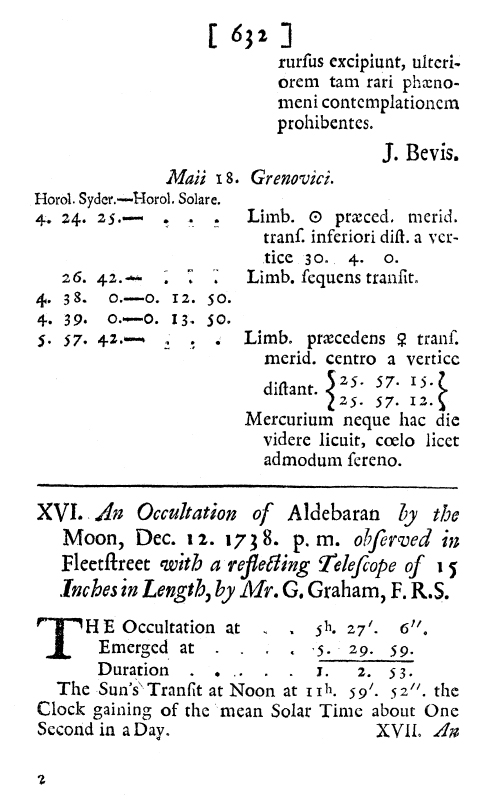
I testi e le tavole sono riprodotte per cortesia di
Philosophical Transactions − the world's first science journal
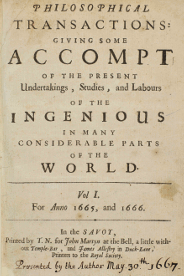
di FELICE STOPPA
MAGGIO 2014